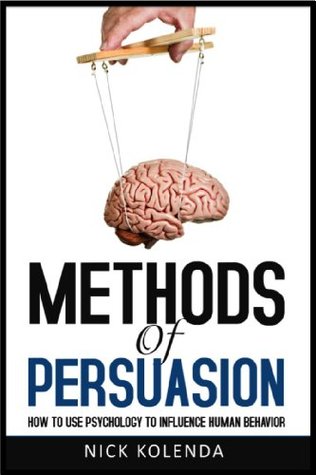More on this book
Community
Kindle Notes & Highlights
by
Nick Kolenda
Read between
September 30, 2018 - June 5, 2019
Even if particular body language doesn’t directly trigger biological responses that alter our mood (e.g., smiling lowers brain temperature, which enhances our mood), our body language can still influence cognitive mechanisms because of self-perception theory.
even when biological responses are inaccurate (or even fake), we still tend to trust that feedback by developing attitudes that are congruent with those responses.
people have a powerful psychological need to maintain consistent attitudes and behavior.
our motivation to resolve that discomfort becomes stronger when the reason for our inconsistency is weak (e.g., a small reward).
In order for people to develop a congruent attitude—whether it’s from their body language or behavior—they must believe that they are freely choosing their behavior, rather than being guided by some large external reward or threat.
researchers have recently found that social rejection and physical pain share the same “neural circuitry” (the anterior cingulate cortex) (Eisenberger & Lieberman, 2004).
point the norm toward the desired behavior, rather than the harmful behavior.
When trying to persuade someone, how can you demonstrate that you belong to the same ingroup? Not only can you use the first technique of revealing any type of similarity, but you could also simply use words like “we” and “us” to reinforce that you belong to the same ingroup. Research shows that these pronouns can trigger a feeling of pleasure because they convey that you belong to the same ingroup (Perdue et al. 1990).
concept of congruent attitudes and how we infer our attitudes by observing our body language and behavior. Remarkably, research reveals that we sometimes infer our attitudes by observing the behavior of others who we perceive to be similar to us.
If your target perceives you to be similar, she will develop attitudes that are congruent with your behavior. Therefore, if your target perceives you to be similar, you should display behavior that’s consistent with the attitude that you’re trying to extract from your target.
The ease and speed with which we process information largely influences our perception of that information, including how much we like it.
When we’re able to quickly process information, that ease of processing feels good, and we misattribute the root cause of those positive feelings.
Repetitions are powerful because they increase processing fluency; each time that we view a repeated stimulus, we’re able to process that stimulus more quickly the next time we encounter it.
When our opinion of two brands is the same, we’re more likely to purchase the brand that comes to our mind more easily because that heightened conceptual fluency feels pleasant, and we mistakenly attribute that pleasantness to the brand (Nedungadi, 1990).
You can increase your chances of persuading someone to comply with a request by casually mentioning the topic of your request immediately prior to making it.


